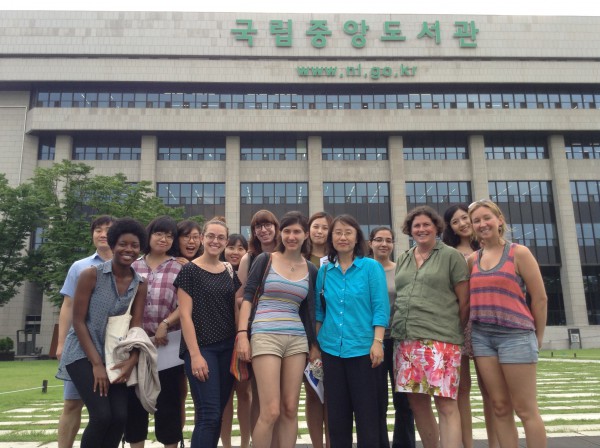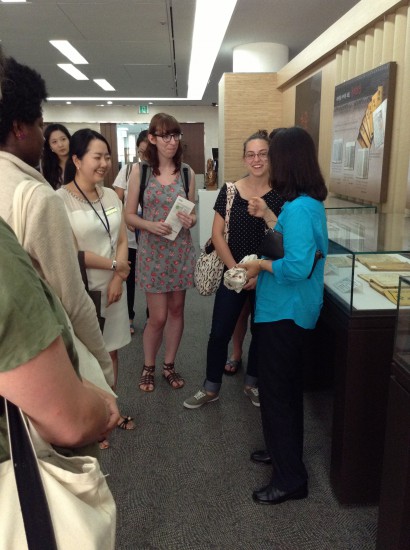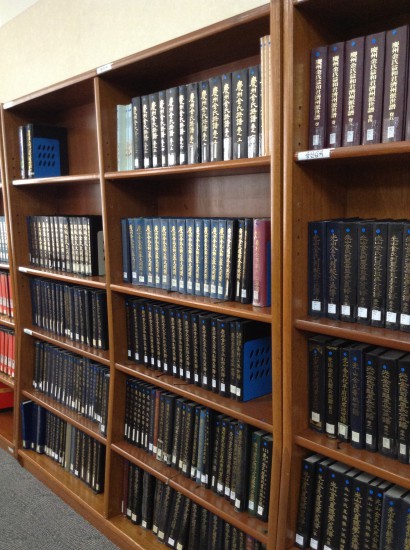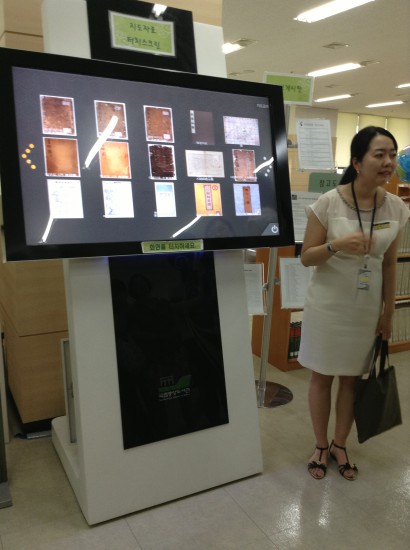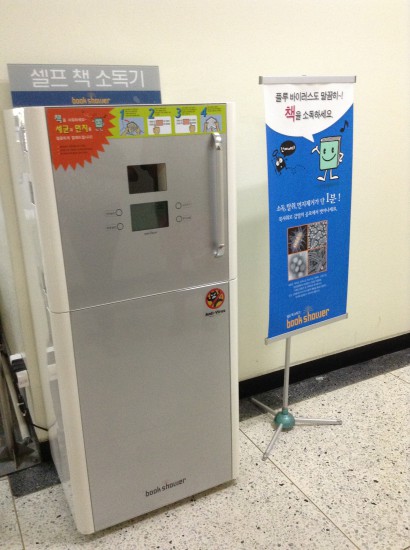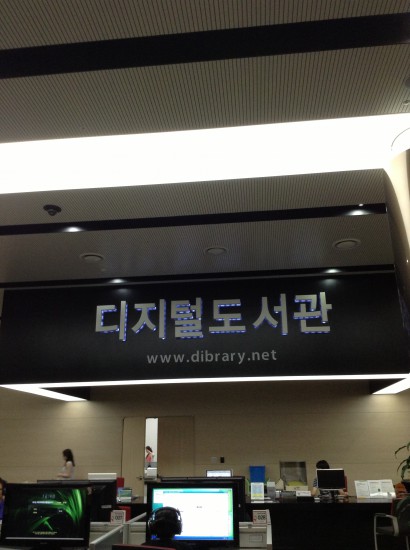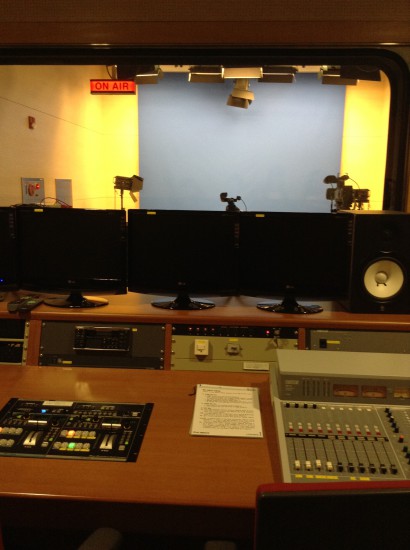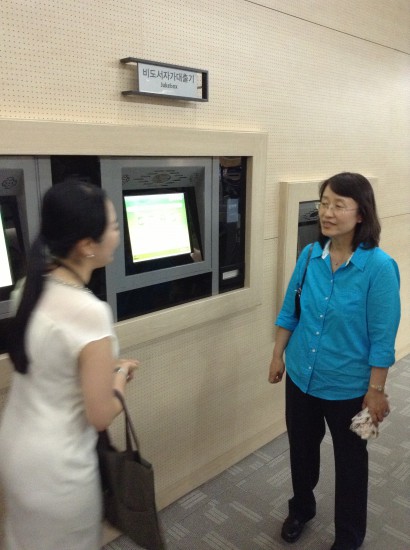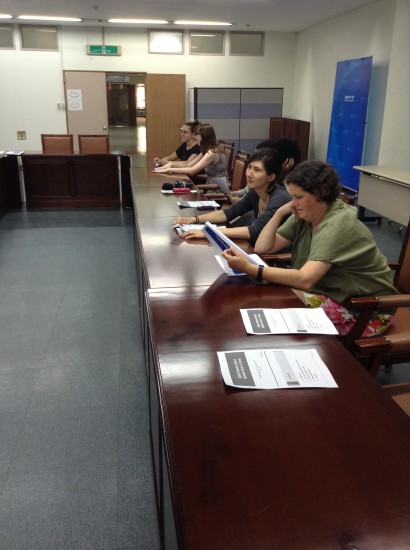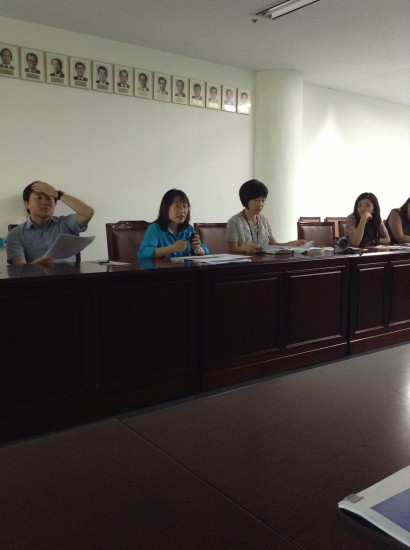Happy Friday afternoon from Yonsei University! Today Professor Wisser is holding her last class meeting for LIS440 and we have an amazing dinner planned for the students at a place called Outdoor Factory tonight. It is a Korean outdoor BBQ restaurant that tries to recreate a camp-style atmosphere with outdoor grills and camping chairs. Check out the video about it here. We are very excited to kick back and enjoy the company of our Korean classmates after a very long week of hard work on campus.
Yesterday, we were able to take another amazing private tour of the National Library of Korea. As honored guests, we were also photographed for a local news publication during our tour. They definitely made us feel extremely welcome, and the Head Librarian even invited Professor Wisser to attend a special meeting with her staff. Another incredible tour…..
We first arrived at the main building of the library which is home to user services, the welcome center, and the main circulation desk. We were immediately struck by how many people were using the library, and what a diverse user group were gathered there. Almost all chairs and tables were full of people conducting research, reading, watching movies, and doing work. Here is a picture of the model of the entire facility:
We began our official tour in the Rare Books and Manuscripts Department, where the guide let us know that in Korea, there is a specific difference between types of rare books based on age of the material, and age of the reproduction. As we learned at the National Archives, all objects deemed a “national treasure” must remain in the archive, and thusly must be reproduced for libraries and museums to have a copies for users to view. We were able to check out a few of these reproductions in the library and learned about the differences between them when they are translated into other languages. Professor Jee Yeon Lee explains more about these rare books here:
We also learned that in Korea, because there are only 20-30 last names of pure Korean descent, the National Library maintains books of family blood lines organized by last name, which makes it incredible easy to conduct genealogy research. Here is what the books look like, and these are not copyright protected so anyone can use and reproduce them:
Next we visited the Maps & Geography Department, where many of the maps are digitized and easily accessed on a touch screen, as our guide demonstrated for us:
Outside of the Maps room, we found this gem of a machine – a book shower. As the guide explained, many of the recently acquired books see a lot of use, and patrons are concerned about the cleanliness of the books. This book shower uses high pressure air and chemicals, similar to dry cleaning for clothes, to sanitize books free of charge.
For the last part of the tour, we learned more about the “Dibrary,” the digital library initiative started by the National Library in 2009. Because many Koreans are still not technology proficient, the National Library feels strongly that the Digital Library of Korea should have a physical space, as well as a digital presence. The actual Dibrary space is free of stacks, and contains many computers for patrons to access digital materials, film, music, and multimedia in various modes. The Dibrary also contains an international reading room with computers available in French, English, Chinese, Japanese & Vietnamese. Library cards are granted to all patrons, including international visitors, and those who live outside of Seoul.
Also in the Dibrary, is a film editing and recording studio open for use to the public:
AND, a digital “jukebox” which lets patrons select a CD to check out:
A group shot outside the library, happy to have another amazing day here!
